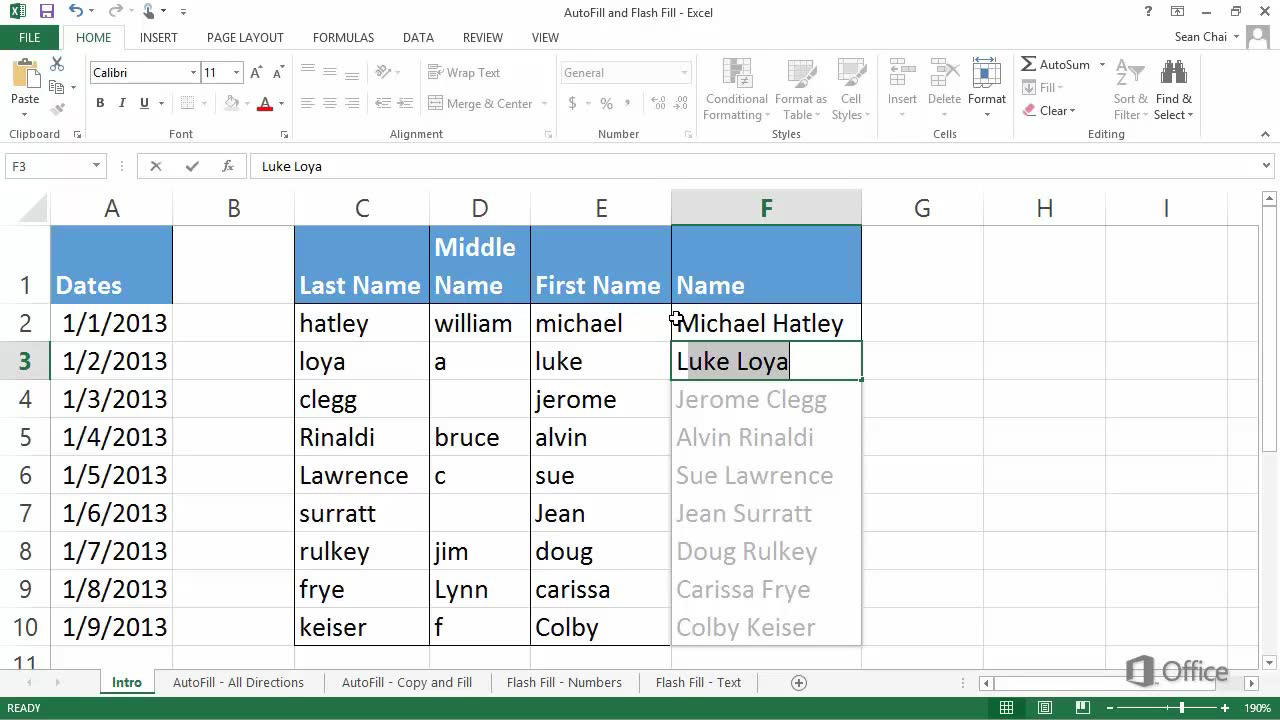Fill 1 Cell With 2 Critearia In Excel 2011 For Mac
Posted : admin On 23.12.2018Select cells in a row that don't match the value in the active cell in that row. You must select the row starting with the active cell. Ctrl + Shift + [Select only cells that are directly referred to by formulas in the selection: Ctrl + [Select cells in a column that don't match the value in the active cell in that column. = INDEX (rng1, MATCH (1, INDEX ((A1 = rng2) * (B1 = rng3) * (C1 = rng4), 0, 1), 0)) The INDEX function can handle arrays natively, so the second INDEX is added only to 'catch' the array created with the boolean logic operation and return the same array again to MATCH.
In Excel 2011, you have to choose the 'Classic' style, and then one of the choices is 'Use a formula.' • Enter the formula in the box as '=( an expression that does or can evaluate to TRUE)'. The absolute reference to A$1 (in the formula shown in the picture) makes it apply to all the cells in the range, so you don't have to enter a formula for each cell. • Choose one of the available formats, or design your own under 'custom format.' You can specify font color, fill and border. Exit the dialog, and you should get something like this.
This step matches the rest of your sheet. On the last line, you append.Font.Bold and set it equal to True. (Note there are not quotes around this one, as it is the boolean value.) This line bolds the font to make the summary info stand out from the rest of the sheet. Both steps are in the code example below. The second loop swaps rows for columns and changes the formula to Sum.
You call this by calling your AllCells range, using its Cells class to get that specific cell using (2,2). To get the final cell in the range, you will still call AllCells. This time using SpecialCells method to get the property xlCellTypeLastCell. You can see both of these in the code block below.

I used 24-hour time, but you can use AM/PM notation if you prefer. Your sheet should match the screenshot above. Add a new tab, and copy your template into it. Then fill out your sales data for the day. (If you don’t have data to populate this sheet, in all the cells to create dummy data.) Next, click on Developer in the Ribbon.
You’ll see the macro overwrites your new data. The way we get around this is using code to make the macro more dynamic using VBA, which is a Want to learn Visual Basic? Here are some great resources to get you started.
Wildcard specifies one digit. Size of 'Range' and 'average-to-range' 'Range' and 'range-to-average' don't have to be the same size array. But as, 'range-to-average' that Excel will use will always begins in its upper left cell, and the size of 'range-to-average' equal to that of 'range,' so be aware. You cannot apply the criteria against a small cell range ('range') and then expect Excel to average a large array. The array (cell range) that Excel uses for averaging will not be any larger than 'range.' For example, if you were to enter this formula: =AVERAGEIF(C5:C6,'>=1',D2:D7), then Excel would only average the values in D2 and D3. We hope you have enjoyed our tutorial on the AVERAGEIF function of Microsoft Excel.
Advertisement Excel on the Mac has not always been the same powerhouse it was on Windows. Macros really wouldn’t work unless they were created exclusively for the Mac. Starting in 2013, Microsoft brought back macros. There are two types of macros: those you can create by quickly recording your actions, and those that use VBA to design more advanced automations. With Office 2016, Excel is using the.
Because of this background, I am often able to pick just the right Office app that will make a given task the easiest to do. Another task might be suited to WinPPT because of the Animation Painter, which is not in any MacPPT version. Microsoft outlook , word for mac 2016, excel for mac 2016, powerpoint for mac 2016. One task might be particularly well suited to MacWord 2011 because Publishing Layout View— a feature only in that one Word version— will make this task easy. Yet another task might be best suited to WInPPT 2013 because it needs an Office extension not available in other Office suites.” And this is what Schmucker’s setup looks like with various versions of Office installed on Mac and using virtual machines: • MacOffice 2011 is my main productivity suite and is installed on my El Capitan MacBook Pro.
Function: =SUMIF(C2:C7,'>='&D2,B2:B7) Result: $700 Explanation: This SUMIF function is the same as Example 4 except instead of the criteria containing the number 20, we reference a cell address that contains the number 20. When the criteria contains a cell address, certain important syntax rules must be followed.
Wb2, Sheet1, A1:J6 houses a relevant sample, the headers included. Plan County Field-1 Field-2 Field-3 Field-4 H1032-021 POLK 16 21 14 18 H1032-021 DADE 23 45 56 89 H1032-021 ORANGE 46 70 65 34 H1045-001 DADE 10 90 76 19 H1045-001 BROW 23 40 98 78 wb1, Sheet1. DADE idx Field-1 Field-2 Field-3 Field-4 H1032-021 2 23 45 56 89 H1045-001 4 10 90 76 19 B4: DADE (a county of interest.
• When you're done, click again. Show data in a different font color or format • Select the data that you want to show in a different color or format. Note: To select all the data in a cell, click the cell. To select part of the data, double-click the cell, and then select the data that you want.